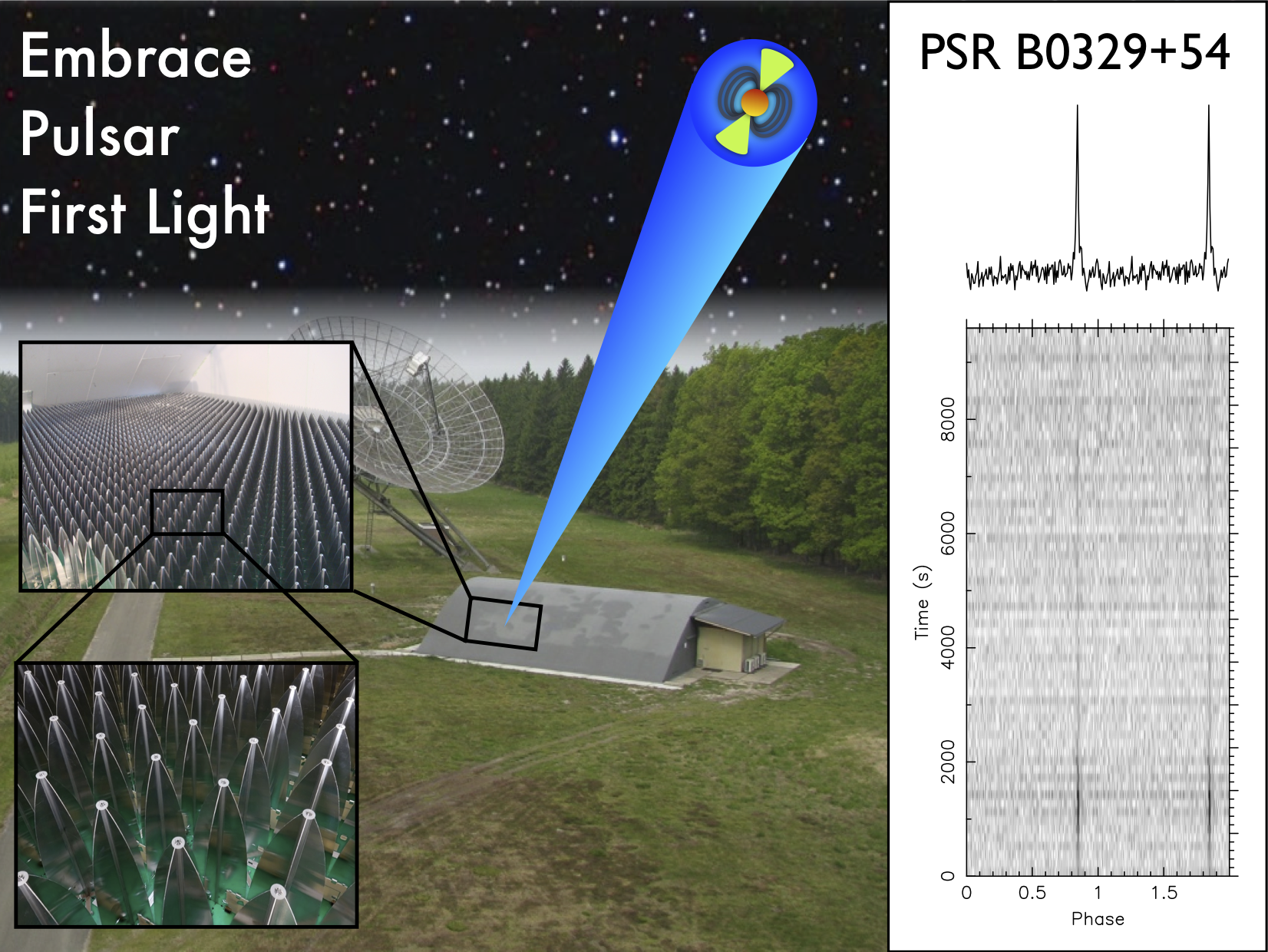Daily Image
14-12-2010EMBRACE detects its first pulsar
| Submitter: | The EMBRACE Team |
| Description: | EMBRACE detects its first pulsar. EMBRACE has recently achieved the first ever pulsar detection with an L-Band Aperture Array. This is an exciting and important result, as the detection of such a weak astronomical signal, especially considering the limited available collecting area of EMBRACE, places high demands on the pointing precision of the beam and the dynamical behaviour of the EMBRACE array at WSRT. This first light measurement was carried out over 13 hours during the night of 1-2 December at a central frequency of 1207MHz, and using a total bandwidth of 12MHz. The detected pulsar, PSR B0329+54, has a rotational period of 714 milliseconds, and a phase-averaged flux density of 203mJy. The current EMBRACE configuration consists of 24 tiles, resulting in a total effective collecting area of 27 m2. The system temperature is approximately 100K. Shown here is the pulsar signal as a function of time and rotational phase, with the cumulative pulse profile, i.e. the sum of all pulses, shown at the top (and repeated twice for clarity). Only a ~2-hour section of the data is shown because the signal varies strongly in brightness due to scintillation. In the past months, the EMBRACE team has significantly developed and improved the capture system responsible for recording the data and has also made great strides in optimizing the pointing updating in the digital beam-former. The next challenge will be to make similar measurements using two analogue beams in order to simultaneously observe two pulsars widely separated on the sky. There is also significant sensitivity to be gained in the coming months by increasing the recorded bandwidth and total collecting area. |
| Copyright: | EMBRACE |
| Tweet |  |
